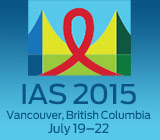 Young gay and bisexual men adhered moderately well to Truvada (tenofovir/emtricitabine) as pre-exposure prophylaxis (PrEP) in a recent trial, but adherence dropped over time and was very poor among black and mixed-race participants, aidsmap reports. Researchers presented findings of the ATN 110 study of gay and bi men ages 18 to 22 at the 8th International AIDS Society Conference on HIV Pathogenesis, Treatment and Prevention in Vancouver, British Columbia.
Young gay and bisexual men adhered moderately well to Truvada (tenofovir/emtricitabine) as pre-exposure prophylaxis (PrEP) in a recent trial, but adherence dropped over time and was very poor among black and mixed-race participants, aidsmap reports. Researchers presented findings of the ATN 110 study of gay and bi men ages 18 to 22 at the 8th International AIDS Society Conference on HIV Pathogenesis, Treatment and Prevention in Vancouver, British Columbia.
The study enrolled 200 men of an average age of 20 at clinics in 12 U.S. cities, with 142 of them completing the 48-week trial. Fifty-three percent of the 200 were black, 17 percent Latino and 21 percent white, with the remainder were mixed-race and Asian and Pacific Islanders.
The men were at very high risk for HIV. At the study’s outset, they reported an average of five sexual partners in the last month. Eighty-one percent reported condomless sex during the previous six months. Fifty-eight percent said their last sexual experience involved being the receptive partner (the bottom) in condomless anal intercourse. More than 20 percent had previously been diagnosed with a sexually transmitted infection.
Twenty-five participants (12.5 percent) discontinued PrEP use because of side effects, mostly gastrointestinal.
The participants were first put through either a seven-week behavioral course to improve their self-care and assertiveness, or a comparable number of cognitive-behavioral counseling sessions. Then they were given Truvada and instructed to take it daily.
At first adherence was good. Nearly 60 percent of the participants were taking Truvada at least four days a week, which previous research has estimated offers maximum protection against HIV. Two months into the trial, tests showed that 95 percent of the men had taken at least some Truvada.
But after the third month of the trial, when visits switched from monthly to once every three months, adherence dropped off dramatically, suggesting that young people may need more constant monitoring to ensure they adhere to PrEP. At the end of the 48 weeks, just 35 percent of the men were taking Truvada at least four days a week; 30 percent were apparently not taking any PrEP.
The median drug level of the white and Latino participants was equivalent to four or more pills a week. The black participants’ average drug level never reached that point, and by the study’s end it was close to zero.
Four participants contracted HIV during the study, for an annual infection rate of 3.29 percent. All of these men had taken Truvada at some point, but did not have detectable levels of the drug when they were diagnosed with the virus.
There was no statistically significant change in sexual risk-taking during the study, suggesting that, among such high-risk participants, PrEP does not encourage what is known as risk compensation.
Higher-risk participants were more likely to adhere to PrEP. Tests showed that those who reported having condomless sex had consistently higher levels of tenofovir (one of the two drugs in Truvada) in their blood.
To read the aidsmap article, click here.
Advertisement
Advertisement
Advertisement






Comments
Comments